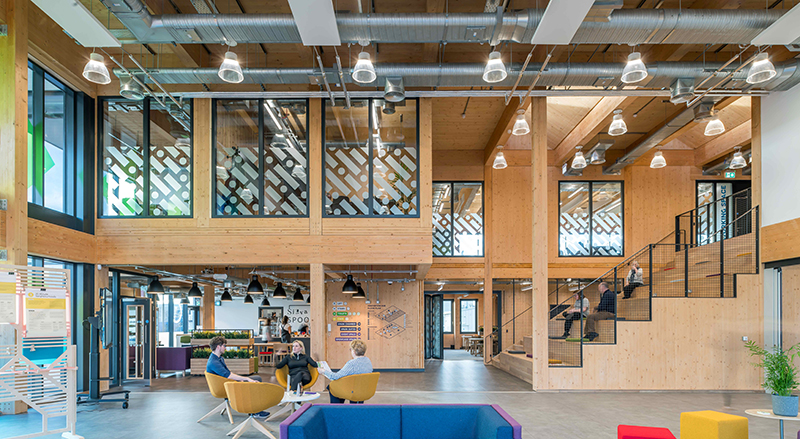
ARCHITECTURE practice Holmes Miller has published a refreshed sustainability charter as part of its commitment to a carbon neutral built environment.
Described as an ‘active response’ to the climate emergency and government net zero targets, the practice revealed it has updated its original 2020 charter, to reinforce the integration of sustainability principles into every project and service that it offers.
Targets set out in the charter for the coming year include:
- integrating Passivhaus principles into the practice’s design approach, regardless of whether a project is targeting Passivhaus certification
- using a new embodied carbon assessment tool, developed in-house, across all projects
- monitoring in-use energy across all projects, by promoting post occupancy evaluation
- monitoring office energy use to improve performance
Holmes Miller added that ‘ethical considerations’ also feature strongly within the charter, which sets out a series of measures to improve working practices, employee wellbeing, and to upskill the team in inclusive design principles, such as designing for neurodiversity and sensory processing differences. Investment will also be made in non-profit activities, and enhancing the local communities around the firm’s Glasgow and St Albans studios.
The practice has already signed up to the RIBA 2030 Climate Challenge, invested in an electric pool car, installed EV charging and additional cycle parking at its offices, and implemented a nine-day fortnight for staff. It is also currently working on over 50,000 sqm of Passivhaus projects.
Callum Houston, MD at Holmes Miller, said, “Sustainable buildings bring long term value to clients and communities, economically as well as ecologically. We’ve been designing with sustainability in mind for many years now, including Scotland’s first Passivhaus leisure centre which is currently on-site at Blairgowrie.
“This charter is all about us becoming even more proactive. Government net zero commitments can only be achieved if the built environment sector pulls together and goes far beyond the minimum sustainable measures that it can get away with.
“Whether it’s a new build or retrofit project, creating a net zero building for the first time can be daunting, but we have the tools and expertise to help clients decide the best sustainability route to do down. Whether it’s Passivhaus, AECB, LETI, Net Zero Public Sector Building Standards, or PAS2030, we can cut through the complexities and offer clear guidance for every step of the process. We can also help clients to visualise the tangible longer-term benefits of designing sustainably, such as reduced energy bills and improved wellbeing of occupants.
“This charter isn’t about us paying lip service to the issue – it firmly sets out our stall as sustainable design experts that can help clients create buildings that positively impact the environment as well as communities. It will be reviewed annually, with targets set and updated, and we will be reporting on its progress.”








